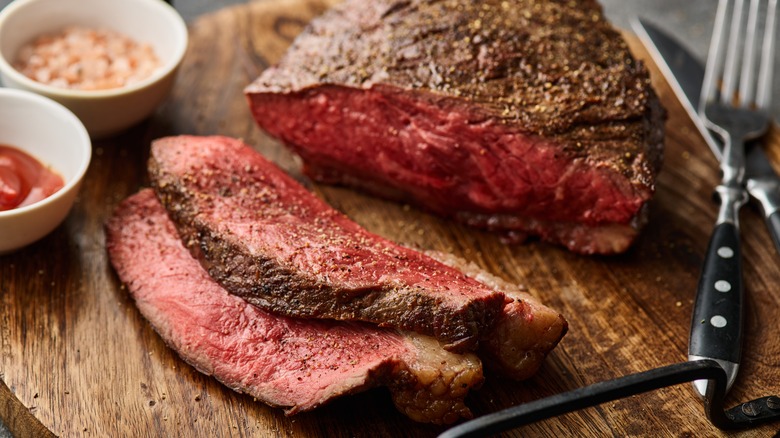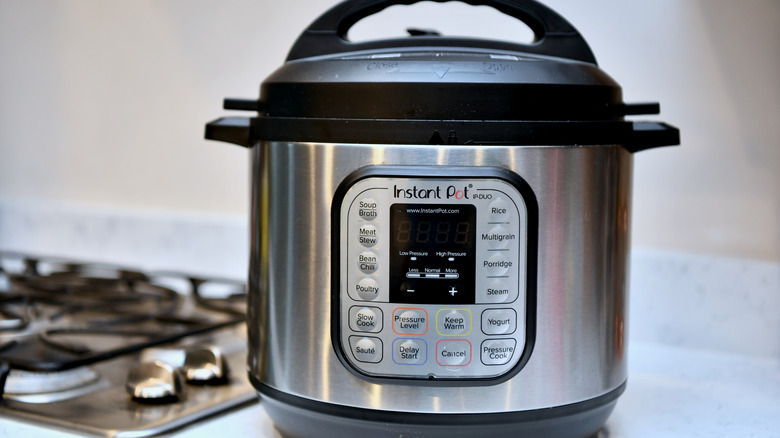The Quickest Cooking Method For Rump Roast
While all the glory goes to cuts like prime rib roast, whole tenderloin, strip roast, and even the darling of pot roasts everywhere, chuck roast, little credit is given to rump roast. It's a shame though, as rump roast is an inexpensive cut that can feed a crowd, and, if cooked with care, can be quite delicious. Thankfully, there is a bit of a shortcut if you have a certain updated kitchen gadget. An electric pressure cooker, such as an Instant Pot, can speed along a rump roast so that you're not waiting hours on end.
Rump roast is, just as the name implies, from the cow's derriere, specifically the top portion closest to the tail. The rump is a large muscle, well-worked and lean, which means it is apt to dry out if cooked too quickly at too high a heat with too little liquid. Now, you may be saying an electric pressure cooker works extremely quickly by design. While true, its relatively-low temperature environment — between 239 and 244 degrees Fahrenheit — and the mechanism of the pressure help keep things inside from overcooking. A 3-to-4-pound rump roast should take about an hour in an electric pressure cooker.
Using an Instant Pot shaves down the hours
Fact of the matter is, some people just don't have an electric pressure cooker or even an analog one. That doesn't mean that perfectly cooked rump roast is out of grasp, though. A thick crock, like a Dutch oven, can easily help your rump roast dreams come true. Simply season and sear the meat and nestle it with optional aromatics, such as mirepoix, garlic, and herbs, before covering it in stock, wine, beer, or some combination thereof. This should be brought to a boil before being covered and set in a 300-degree-Fahrenheit oven to braise for about two and a half to three hours.
Kin to the electric pressure cooker, a Crock Pot is the next best thing for rump roast. It will still allow you to sear the meat and cook it all in one vessel, it will just take a bit longer. The meat needs to be treated as above and set to cook on low for several hours. With this method, you're looking at increasing the cooking time over an electric pressure cooker by a factor of seven or eight. But those are inactive hours, so you have plenty of time to whip up some sides.

